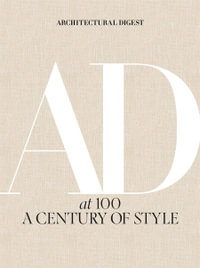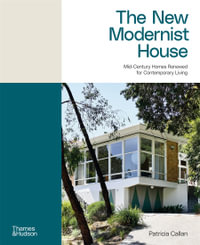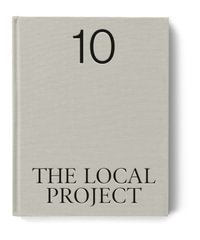
Standard Letters in Architectural Practice
By: David Chappell
Hardcover | 27 June 2008 | Edition Number 4
At a Glance
368 Pages
Revised
24.96 x 17.57 x 2.22
Hardcover
RRP $199.05
$168.35
15%OFF
or 4 interest-free payments of $42.09 with
orAims to ship in 7 to 10 business days
Industry Reviews
Introduction.
1 Appraisal.
1 To client, if asked to tender on fees.
2 To prospective client, offering services.
3 To client, regarding the first visit.
4 To client, setting out terms of appointment SFA/99 or S-Con-07-A.
5 To client, setting out terms of appointment CE/99 or S-Con-07-A (a).
6 To client, setting out terms of appointment CE/99 or S-Con-07-A (b).
7 To Client, setting out terms of appointment SW/99 or C-Con-07-A (a).
8 To client, setting out terms of appointment SW/99 or C-Con-07-A (b).
9 To client, requesting payment in advance.
10 To client, regarding other architects engaged on the work.
11 To other architect, regarding former engagement.
12 To client, if former architect notifies some problem.
13 To client, if former architect states that the client does not have a copyright licence.
14 To client who claims to have a copyright licence.
15 To client, if architect asked to sign a warranty not previously mentioned.
16 To client, if architect asked to sign a warranty only agreed in principle.
17 To client if asked to provide a certificate of satisfaction not previously mentioned.
18 To client, if a conflict of interest arises.
19 To client, regarding the CDM Regulation duties.
20 To client, regarding site survey.
21 To client, before carrying out a site survey.
22 To client, if requested to help in boundary negotiations.
23 To client, if problem encountered during survey.
24 To geotechnical specialists, enquiring about soil survey.
25 To Coal Authority, requesting preliminary information.
26 To BT, requesting preliminary information.
27 To electricity supplier, requesting preliminary information.
28 To gas supplier, requesting preliminary information.
29 To water supplier, requesting preliminary information.
30 To drainage authority, requesting preliminary information.
31 To highway authority, requesting preliminary information.
32 To National Power, requesting preliminary information.
33 To Mobile Telephone Companies, requesting preliminary information.
34 To Cable Television, requesting preliminary information.
35 To client, seeking information.
36 To client, enclosing the feasibility report.
2 Design Brief .
37 To client, regarding early appointment of consultants.
38 To client who queries early appointment of consultants.
39 To client, enclosing draft for appointment of consultants.
40 Client to consultant [draft prepared by architect].
41 To client, if consultants' agreements are complex.
42 To client who wishes architect to appoint consultants.
43 To client, if architect is to appoint consultants (a).
44 To client, if architect is to appoint consultants (b).
45 To client, if architect wishes to appoint consultants (a).
46 To client, if architect wishes to appoint consultants (b).
47 To consultant, seeking indemnity.
48 To client if consultancy services to be provided by the architect.
49 To client, suggesting the use of a supplier or sub-contractor in a design capacity.
50 To client, regarding lists of firms to design and supply/execute.
51 To client, regarding lists of firms to supply.
52 To client, if a relatively new material or process is proposed.
53 To members of the design team, arranging meeting.
54 To client, regarding fees for planning applications.
55 To planning authority, requesting outline approval.
56 To client who considers that drawing work should proceed before necessary approvals obtained.
57 To planning authority, requesting renewal of temporary permission.
58 To client, enclosing fee account.
59 To client, if fees are late: first reminder.
60 To client, if fees are late: second reminder.
61 To client, if fees are late: third reminder.
62 To client, if fees late: legal action threatened.
3 Concept.
63 To client, if amenity society writes with objections.
64 To amenity society, if they write with objections.
65 To client, regarding form of contract to be used (a).
66 To client, regarding form of contract to be used (b).
67 To client, regarding form of contract to be used (c).
68 To client, regarding form of contract to be used (d).
69 To client, regarding form of contract to be used (e).
70 To client, regarding form of contract to be used (f).
71 To client, regarding form of contract to be used (g).
72 To client, regarding the content of the Employer's Requirements.
73 To client, enclosing concept design report.
4 Design Development .
74 To manufacturer, asking for technical literature.
75 To manufacturer, asking representative to visit for general purposes.
76 To manufacturer, asking representative to visit for special purposes.
77 To manufacturer, asking for letter.
78 To local authority environmental services department, enclosing sketch plans.
79 To fire prevention officer, enclosing sketch plans.
80 To telephone service provider, enclosing sketch layout.
81 To electricity supplier, enclosing sketch layout.
82 To gas supplier, enclosing sketch layout.
83 To water supplier, enclosing sketch layout.
84 To highway authority, enclosing sketch layout.
85 To environmental health authority, regarding Clean Air Acts.
86 To client, advising that additional requirements will cause the cost to rise above budget.
87 To client, enclosing final draft of Employer?s Requirements.
88 To client, enclosing the scheme design report.
89 To client, regarding modification of the brief.
90 To client who cannot understand why redesigning costs extra fees.
91 To client, confirming instruction to do extra work.
5 Technical Design.
92 To client, regarding promptness of decisions.
93 To client, regarding modifications to size, shape, location or cost.
6 Production Information.
94 To client, requesting fees for Building Regulations application.
95 To client, requesting fees for Planning and Building Regulations application.
96 To planning authority, requesting approval of reserved matters.
97 To planning authority, applying for full planning approval.
98 To planning authority, applying for full planning permission and Building Regulations approval.
99 To local authority, requesting Building Regulations Approval.
100 To HM Inspectorate (Health and Safety Executive), applying for fire certificate.
101 To client, regarding main contractor tender list.
102 To client, regarding main contractor tender list if two stage tendering is to be used.
103 To client, confirming tender details.
104 To donor, returning gift.
105 To prospective named sub-contractor/person, enquiring if willing to submit a tender.
106 To prospective contractor, enclosing questionnaire.
107 To referee, regarding suitability of contractor.
108 To contractor, enquiring if contractor is willing to submit a tender.
109 To unsuccessful sub-contractors and suppliers.
110 To client, confirming the amount of liquidated damages.
7 Tender Documentation.
111 To client, if clerk of works required.
112 To all contractors on tender list, if date delayed.
8 Tender Action.
113 To client, regarding letter of intent to named sub-contractors and suppliers.
114 To named sub-contractor or supplier: letter of intent.
115 To contractor, inviting it to tender if bills of quantities included.
116 To contractor, inviting it to tender if bills of quantities not included.
117 To contractor, inviting it to tender.
118 To client and quantity surveyor, enclosing copy of invitation to tender.
119 To all contractors, regarding questions during the tender period.
120 To client, regarding opening of tenders.
121 To contractor who submits a qualified tender.
122 To contractor who submits a qualified tender if insufficient compliant tenders received.
123 To contractors who submit the second and third lowest tenders.
124 To contractors not among the three lowest tenderers.
125 To contractors who submit the second and third lowest tenders if another tender accepted.
126 To contractor who submits the lowest tender, but with errors to be dealt with when overall price is dominant.
127 To contractor who submits lowest tender, but with errors to be dealt with where pricing document is dominant.
128 To contractor, accepting tender subject to formal documents.
129 To contractor, accepting tender and forming contract immediately.
130 To consultants, regarding successful tenderer.
131 To unsuccessful tenderers.
9 Mobilisation.
132 To contractor, enclosing the contract documents.
133 To client, enclosing the contract documents.
134 To contractor, returning one copy of the contract documents.
135 To client, regarding letter of intent to contractor.
136 To contractor: letter of intent.
137 To contractor regarding insurance.
138 To contractor, regarding insurance.
139 To contractor, regarding insurance.
140 To client, regarding insurance (a).
141 To client, regarding insurance (b).
142 To client, regarding insurance (c).
143 To contractor, regarding insurance policies.
144 To contractor, requesting evidence of insurance.
145 To contractor, regarding performance bond.
146 To contractor, regarding advance payment bond.
147 To contractor, regarding off-site materials bond.
148 To client, at the beginning of the building contract.
149 To clerk of works, on appointment.
150 To contractor, noting the authority of the clerk of works.
151 To contractor, regarding extension of authority of the clerk of works.
152 To contractor, naming authorised representatives.
153 To contractor, regarding the issue of instructions.
154 To contractor, regarding sub-letting.
155 To contractor, regarding sub-letting.
156 To contractor, if architect is employee of the employer.
10 Construction to Practical Completion.
157 To contractor, if it fails to maintain insurance cover (a).
158 To contractor, if it fails to maintain insurance cover (b).
159 To contractor, if it fails to maintain insurance cover (c).
160 To contractor, if it fails to maintain insurance cover (d).
161 To client, if contractor fails to maintain insurance cover (a).
162 To client, if contractor fails to maintain insurance cover (b).
163 To client, if contractor fails to maintain insurance cover (c).
164 To client, if contractor fails to maintain insurance cover (d).
165 To contractor, confirming possession of the site.
166 Draft letter from employer to contractor, deferring possession of the site.
167 To contractor, who wrongly asks the architect to instruct integration of CDP design.
169 To contractor, if architect finds a discrepancy within the Contractor's Proposals.
170 To contractor, if architect finds an inconsistency in CDP documents.
171 To contractor, requesting consent to the addition of persons to the list under clause 3.8.
172 To contractor, if it sub-lets without architect's consent (a).
173 To contractor, if it sub-lets without architect's consent and not in accordance with clauses 3.6 or 3.7 (b).
174 To contractor, regarding employer's licensees (a).
175 To contractor, regarding employer's licensees (b).
176 To contractor, regarding employer's licensees (e).
177 To client, enclosing report on progress.
178 To persons affected, enclosing extract of minutes.
179 To originator of minutes, if architect disagrees with contents.
180 To client, if disagreeing with former architect's decisions.
181 To contractor client, if disagreeing with former architect's decisions.
182 To contractor client, if architect?s drawings rejected.
183 To contractor client, if instructions received which are contrary to the Employer?s Requirements.
184 To employer who is seeking advice, if architect engaged by contractor client.
185 To contractor, on receipt of master programme.
186 To contractor, on receipt of master programme if required to approve it.
187 To contractor, if architect asked to check setting out.
188 To contractor, confirmed acceptance under schedule 2.
189 To QS, if failing to respond to contractor?s valuation where there is disagreement.
190 To contractor, if seeking payment for off-site materials and there is no employer?s list.
191 To contractor, who has submitted drawings (a).
192 To contractor who has submitted drawings under the design submission procedure (b).
193 To contractor who has submitted design drawings (c).
194 To contractor who contends that compliance with a comment will give rise to a variation.
195 To contractor, if requesting information and there is no information release schedule (a).
196 To contractor if requesting information (b).
197 To contractor if requesting information (c).
198 To contractor, if requesting information on the information release schedule.
199 To contractor, if letter not understood.
200 To contractor, pending detailed reply.
201 To contractor, seeking proof of compliance (a).
202 To contractor, seeking proof of compliance (b).
203 To contractor, requesting samples.
204 To contractor, regarding compliant samples.
205 To contractor, regarding failure of samples.
206 To manufacturer, if problems with product on site.
207 To quantity surveyor regarding defective work.
208 Draft letter from employer to contractor, amount proposed to be paid (a).
209 Draft letter from employer to contractor, amount proposed to be paid (b).
210 Draft letter from employer to contractor, amount proposed to be withheld (a).
211 Draft letter from employer to contractor, amount proposed to be withheld (b).
212 To contractor, if defective work opened up.
213 To contractor, after failure of work (a).
214 To contractor, after failure of work (b).
215 To client, confirming instruction which entails extra cost.
216 To client, if material change to approved design necessary.
217 To contractor, requiring compliance with instruction.
218 To contractor, who fails to comply with notice.
219 To Contractor, if no grounds for extension of time.
220 To contractor, if no extension of time due.
221 To contractor, if issuing extension in two parts because of lack of time before completion date.
222 To contractor, giving extension of time.
223 To client, enclosing a report on extension of time.
224 To contractor, shortly after practical completion.
225 To contractor, reviewing extensions of time after completion date or practical completion (a).
226 To contractor, reviewing extensions of time after completion date or practical completion (b).
227 To client, enclosing certificate of non-completion (a).
228 To client, if Works not complete (b).
229 To client, if Works not complete by date for completion and further extensions may be due.
230 Draft letter from employer to contractor, before deducting liquidated damages.
231 To client, advising on the deduction of liquidated damages.
232 To client, if it would be unfair to deduct liquidated damages.
233 To client, regarding common law claims.
234 To client regarding loss and/or expense applications.
235 To contractor, if ex-gratia or common law application submitted.
236 To client, regarding ex-gratia claims.
237 To contractor, rejecting application due to failure to comply with contract.
238 To contractor, if application badly presented.
239 To contractor, after receipt of estimate of loss and/or expense under supplemental provision, schedule 2, paragraph 5.
240 To contractor, requesting further information in support of financial claim.
241 To contractor, rejecting application for loss and/or expense.
242 To contractor, accepting financial claim.
243 To contractor, partly accepting financial claim.
244 To quantity surveyor, requesting ascertainment of loss and/or expense.
245 To quantity surveyor, requesting partial ascertainment of loss and/or expense.
246 To client, enclosing report on application.
247 To client, on receipt of contractor?s 7-day notice suspending performance of obligations.
248 Draft letter from employer to contractor, on receipt of 7-day notice suspending performance of obligations.
249 To contractor, on resumption of obligations after suspension.
250 To contractor, giving notice of default (a).
251 To contractor, giving notice of default (b).
252 To contractor, giving notice of default (c).
253 To client, if contractor continues the default.
254 To client, if contractor continues the default (b).
255 To client, if contractor is in default (c).
256 Draft letter from employer to contractor, terminating employment after default notice.
257 To client, if termination by either party possible.
258 Draft letter from employer to contractor, giving notice if termination by either party possible.
259 Draft letter from employer to contractor, terminating if termination by either party possible.
260 Draft letter from employer to contractor, terminating employment after loss or damage.
261 Draft letter from employer to contractor, terminating if terrorism cover no longer available.
262 Draft letter from employer to contractor, determining contract.
263 To client, regarding insurance after termination.
264 To client, if contractor likely to terminate its employment or has issued a default notice.
265 To client, if contractor likely to terminate its employment if termination by either party is possible.
266 To client, if contractor likely to terminate its employment because it is just and equitable.
267 To client, if contractor terminates its employment.
268 Draft letter from employer to contractor, giving notice of intention to refer a dispute to adjudication.
269 Draft letter from employer to Nominating Body, requesting nomination of an adjudicator.
270 Draft letter from employer to adjudicator, enclosing the Referral.
271 Draft letter from employer to contractor, if adjudicator?s decision is in employer?s favour.
272 To employer, if asked to respond to contractor?s adjudication notice.
273 Draft letter from employer to contractor, requesting concurrence in the appointment of an arbitrator.
274 Draft letter from employer to contractor, requesting concurrence in the appointment of an arbitrator.
275 Draft letter from employer to relevant Professional Body, if there is no concurrence in the appointment of an arbitrator or, in the case of GC/Works/1 (1998), the named arbitrator is unable to act.
276 Draft letter from employer to contractor proposing mediation of a dispute.
277 To client, if impractical to carry out certain services.
278 To client, determining all performance and obligations by reasonable notice.
279 To client, giving 14 days notice to terminate the agreement.
280 To client, terminating the agreement.
279 To client, giving 14 days notice to terminate the agreement.
281 To client, if client terminates appointment by reasonable notice (a).
282 To client, if client terminates appointment by reasonable notice (b).
283 To client, if client has not given instructions to resume suspended service within six months (a).
284 To client, if client has not given instructions to resume suspended service within six months (b).
285 To client, if another architect appointed.
286 To other architect, appointed by client, if fees etc. outstanding.
287 To employer who wishes to use new building before practical completion certified (a).
288 To employer who wishes to use part of the Works before practical completion certified (b).
289 To consultants, regarding testing and commissioning of plant.
290 To client, regarding testing and commissioning of plant.
291 To client, prior to completion.
292 To client, confirming handover meeting.
293 To contractor regarding inspection before completion.
294 To consultants, regarding inspection before completion.
11 Post Practical Completion.
295 To client, after handover.
296 To contractor, if sending schedule of defects.
297 To contractor if immediate attention required during the rectification period.
298 To contractor, requiring making good during the rectification/maintenance period.
299 To client, if some defects are not to be made good.
300 To contractor, instructing that some defects are not to be made good.
301 To contractor, requiring ?as-built' records.
302 To contractor, requiring return of all drawings and documents.
303 To client, seeking permission to publish details of the project.
304 To client, requesting feedback information.
305 To consultants, requesting feedback information.
306 To contractor, requesting feedback information.
307 To client, if architect asked to inspect suspected defects after the end of the rectification period.
308 To client regarding latent defects after the final certificate.
309 To contractor, regarding latent defects.
Index
ISBN: 9781405179652
ISBN-10: 1405179651
Published: 27th June 2008
Format: Hardcover
Language: English
Number of Pages: 368
Audience: Professional and Scholarly
Publisher: John Wiley & Sons (UK)
Country of Publication: US
Edition Number: 4
Edition Type: Revised
Dimensions (cm): 24.96 x 17.57 x 2.22
Weight (kg): 0.88
Shipping
| Standard Shipping | Express Shipping | |
|---|---|---|
| Metro postcodes: | $9.99 | $14.95 |
| Regional postcodes: | $9.99 | $14.95 |
| Rural postcodes: | $9.99 | $14.95 |
How to return your order
At Booktopia, we offer hassle-free returns in accordance with our returns policy. If you wish to return an item, please get in touch with Booktopia Customer Care.
Additional postage charges may be applicable.
Defective items
If there is a problem with any of the items received for your order then the Booktopia Customer Care team is ready to assist you.
For more info please visit our Help Centre.























